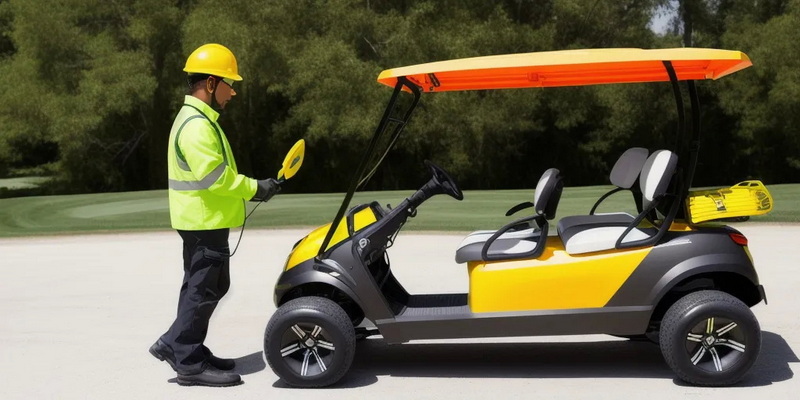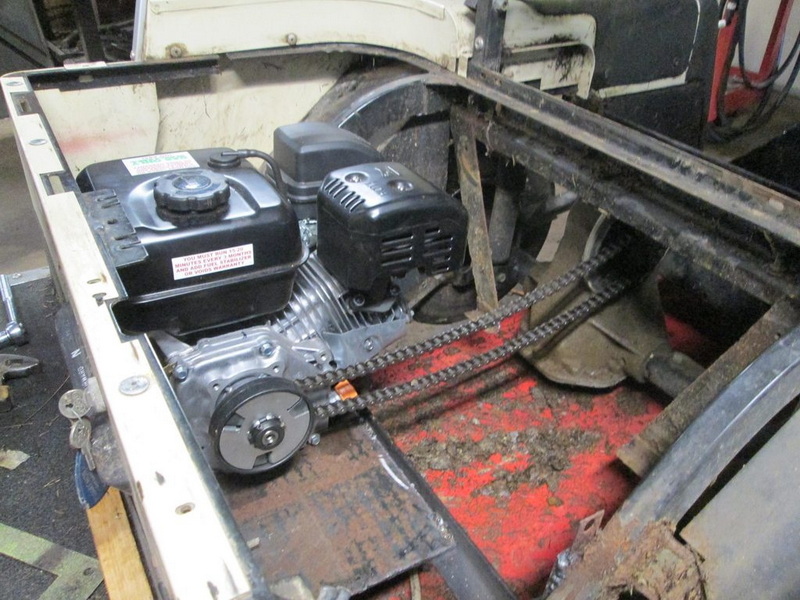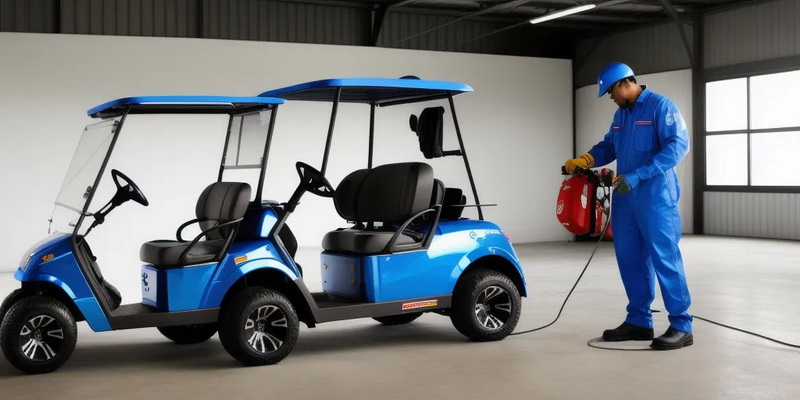Content Menu
● Understanding Electric vs. Gas Golf Carts
● Reasons for Conversion
● The Conversion Process
>> Step 1: Gather Necessary Components
>> Step 2: Remove Electric Components
>> Step 3: Install Gas Engine
>> Step 4: Wiring and Controls
>> Step 5: Testing
● Challenges of Conversion
● Conclusion
● Related Questions
>> 1. What are the main components needed for conversion?
>> 2. How much does it cost to convert an electric golf cart to gas?
>> 3. Can I do this conversion myself?
>> 4. What are some common challenges faced during conversion?
>> 5. Is it worth converting an electric golf cart to gas?
Converting an electric golf cart to gas is a topic that has garnered interest among golf cart enthusiasts and DIY mechanics. While it is technically possible to make such a conversion, it involves a complex process with various considerations. This article will provide a comprehensive overview of the conversion process, the components required, potential challenges, and the overall feasibility of such a project.

Understanding Electric vs. Gas Golf Carts
Electric golf carts are powered by batteries and electric motors, while gas golf carts use internal combustion engines fueled by gasoline. Each type has its own advantages and disadvantages, which can influence a decision to convert from one to the other.
- Electric Golf Carts:
- Environmentally friendly with zero emissions.
- Quieter operation.
- Lower maintenance costs due to fewer moving parts.
- Limited range and longer charging times.
- Gas Golf Carts:
- More powerful engines suitable for hilly terrains.
- Quick refueling compared to charging electric batteries.
- Generally higher initial costs but lower long-term operational costs in some cases.
- Noisy operation and higher emissions.
Reasons for Conversion
There are several reasons why someone might consider converting an electric golf cart to gas:
- Performance Needs: Gas carts often provide better torque and power, especially for hilly or rugged terrains.
- Range Anxiety: Electric carts can run out of charge quickly, while gas carts can be refueled in minutes.
- Preference: Some users simply prefer the driving experience of gas-powered vehicles.
The Conversion Process
Converting an electric golf cart to gas involves several steps and requires specific tools and parts. Below is a detailed outline of the conversion process.
Step 1: Gather Necessary Components
To begin the conversion, you will need:
- A compatible gas engine (typically between 6.5 HP to 13 HP).
- A fuel tank and fuel lines.
- A carburetor and exhaust system.
- An ignition system (battery and wiring).
- Throttle and brake systems compatible with the new engine.
- Tools such as wrenches, screwdrivers, jacks, and welding equipment if necessary.
Step 2: Remove Electric Components
1. Disconnect the Battery: Safely remove the battery from the electric cart.
2. Remove Electric Motor: Take out the existing electric motor along with any associated wiring and components.
3. Clear Space for Gas Engine: You may need to modify or remove parts of the frame or battery compartment to accommodate the new engine.

Step 3: Install Gas Engine
1. Mounting the Engine: Position the gas engine in place where the electric motor was located. Secure it using appropriate mounts.
2. Connect Fuel System: Install the fuel tank in a safe location, ensuring it is accessible for refueling. Connect fuel lines from the tank to the engine's carburetor.
3. Exhaust System Installation: Install an exhaust system that safely vents gases away from the operator area.
Step 4: Wiring and Controls
1. Ignition System Setup: Connect the ignition system to start the gas engine.
2. Throttle Connection: Ensure that the throttle is connected properly for smooth acceleration.
3. Brake System Adjustment: Depending on your setup, you may need to adjust or replace brake components for compatibility with the new engine.
Step 5: Testing
After installation, conduct thorough testing:
- Check for leaks in fuel lines.
- Ensure all electrical connections are secure.
- Test drive the cart in a safe area to ensure proper functionality.
Challenges of Conversion
While converting an electric golf cart to gas can be rewarding, it comes with challenges:
- Compatibility Issues: Many electric carts have different rear axles than gas models, making direct conversions difficult without extensive modifications.
- Cost Considerations: The total cost of conversion can range from $700 to $2,500 depending on parts and labor involved. This may exceed purchasing a used gas cart outright.
- Time Investment: The conversion process can take anywhere from 10 to 20 hours or more depending on your skill level and available tools.
Conclusion
Converting an electric golf cart to gas is feasible but requires significant mechanical knowledge, time, and financial investment. Many enthusiasts find it more practical to sell their electric cart and purchase a used gas model instead due to compatibility issues and costs associated with conversion kits. Ultimately, whether or not to proceed with such a project depends on personal preferences regarding performance, convenience, and budget.

Related Questions
1. What are the main components needed for conversion?
The main components include a gas engine, fuel tank, fuel lines, carburetor, ignition system, throttle controls, and exhaust system.
2. How much does it cost to convert an electric golf cart to gas?
The cost can range from $700 to $2,500 depending on parts needed and labor costs.
3. Can I do this conversion myself?
While it's possible for experienced DIYers, it's recommended to consult with or hire a professional mechanic due to complexity.
4. What are some common challenges faced during conversion?
Challenges include compatibility issues with axles and frames, high costs compared to buying a used gas cart, and significant time investment required for installation.
5. Is it worth converting an electric golf cart to gas?
It depends on individual needs; many find it more cost-effective and simpler to purchase a used gas cart rather than converting an existing electric model.










































